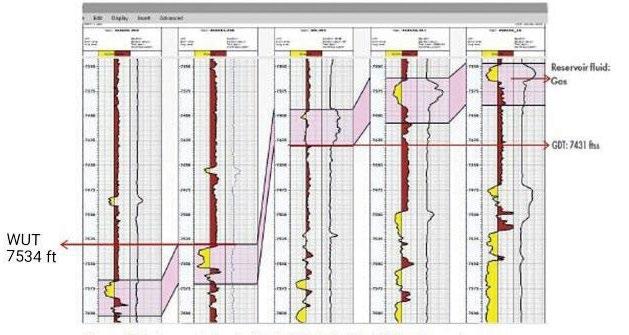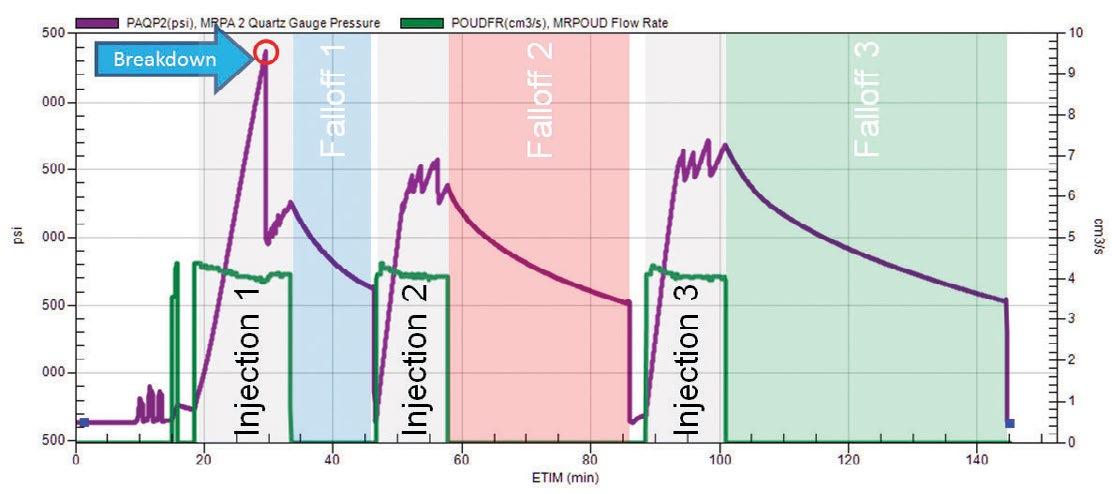CASE STUDY
Estimation of Oil Isothermal Compressibility Muhammad Ali Al-Marhoun - SPE, Reservoir Technologies, Saudi Arabia Oil compressibility plays an important role in reservoir simulation, material balance calculations, design of high-pressure surface-equipment, and interpretation of well test analysis, specifically for systems below bubble point pressure. Accurate information on the oil fluid compressibility above and below bubble point pressure is very important for reservoir evaluation. The conventional definition of isothermal oil compressibility below bubble point pressure is being questioned on its scientific merit and challenged against the basic compressibility definition and the general trend of physical behavior of compressibility. This article presents a new derivation based on the basic compressibility definition to calculate oil compressibility below bubble point pressure. It is found that oil compressibility above and below bubble point according to the new definition is continuous and differentiable except at the original bubble point pressure cusp.
Coefficient of Isothermal Compressibility of Oil, Co
By definition, single phase isothermal compressibility is defined as the unit change in volume with pressure. It is usually expressed as 1/psi. This definition is valid if and only if the single phase composition is constant. Compressibility can be calculated from the slope of relative volume versus pressure of a single phase liquid. In equation form, the point function oil compressibility, Co, is defined as:
with reduction in pressure, contrary to the behavior at pressures above the bubble point. Moreover, density of oil increases with the decrease in pressure due to the liberation of gases. Therefore, the profile of volume and density of liquid oil are opposite to the normal trends in single-phase, constant-composition fluids. A direct application of the general definition of isothermal compressibility of oil below the bubble point will lead to negative compressibility.
(4)
(1) Correlations of Co above Bubble Point
Typical relationship of isothermal oil compressibility, Co, with pressure above the bubble point is shown in Fig. 1.
The typical relationship of Co according to Eq. 4 for pressures below the bubble point pressure is shown in Fig. 2.
Fig. 2 - Typical Oil Compressibility Curve
Fig. 1 - Typical Oil Compressibility Curve above Bubble Point
The isothermal oil compressibility factor above Bubble Point pressure can be estimated to an accuracy of 5% with:
(2) Where; a1=-14.1042, a2=2.7314, a3=-56.0605*10-6, a4=-580.8778 (3) Conventional Definition of Co below Pb
At pressures below the bubble point, volume of oil decreases
14 | E C H O
•
F E B R U A R Y 2016
Eq. 4 is the definition of Co below the original bubble point pressure accepted by petroleum engineers and stated in text books and petroleum technical papers as a fact. The expansion effect of gas coming out of solution expressed in Eq. 4 is wrong, because the gas formation volume factor, Bg, is also changing with pressure. The gas expansion term should be:
(5) Compressibility, as stated in Eq. 1, is defined for constant composition fluids only. Below bubble point pressure, the liquid oil composition changes as pressure decreases. There is no definition of compressibility for such fluid with changing composition.








